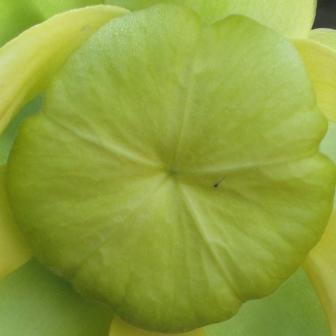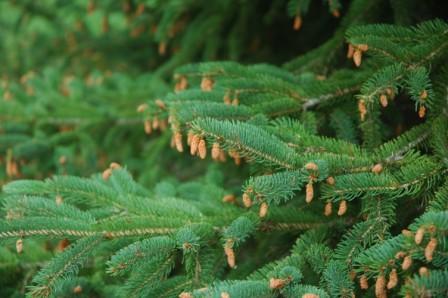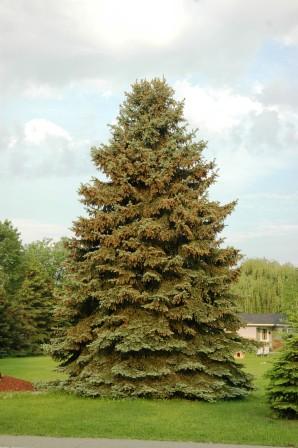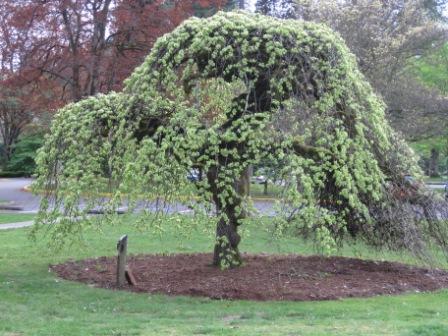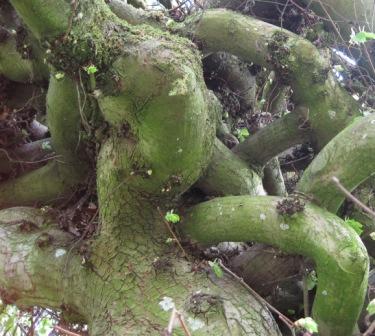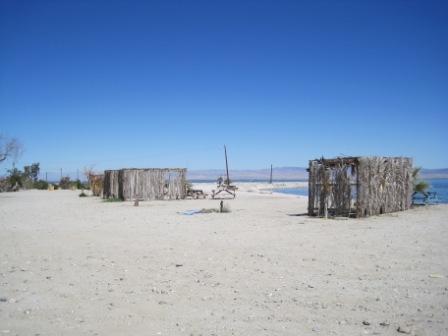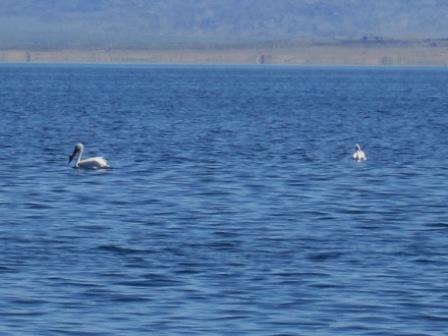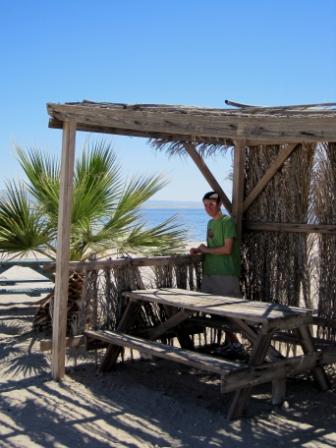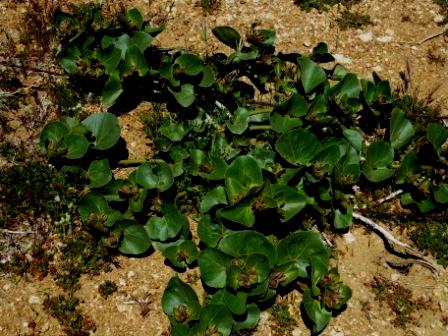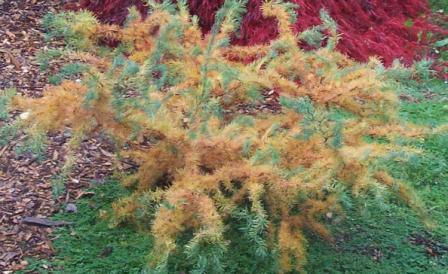Initially I was disappointed that no one answered the question…then Paul W. emailed to say that the post wasn’t accepting comments. We’re not sure why that happened, but Paul and perhaps many of you knew this was part of the flower of Sarracenia flava – the yellow pitcher plant:
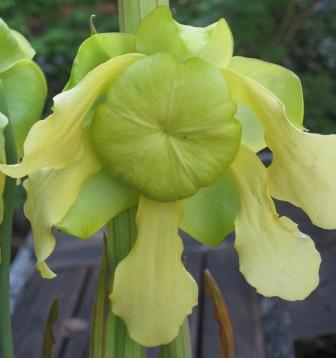
I think this is a stunning flower whose floral structure promotes cross-pollination. Insects crawl in between the long yellow petals and the green "umbrella" to enter the flower and reach the pollen:
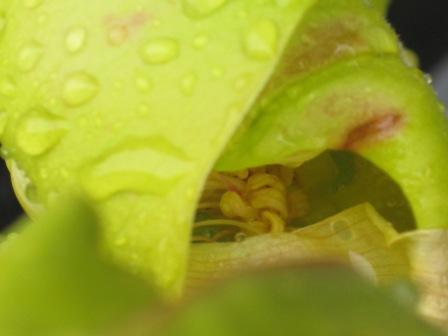
Before they reach the anthers, however, their backs rub up against the stigma, which are five tiny points at the "spokes" of the umbrella. Pollen already on their backs will be transferred to the stigma before new pollen is gathered, so that the chances of selfing are reduced:
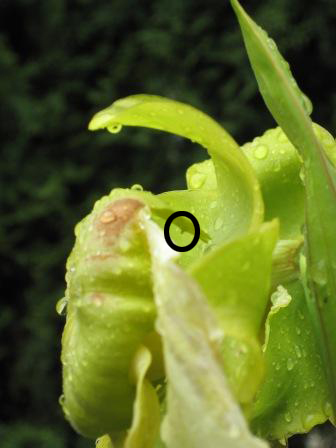
So thanks, Paul, for being so persistant that you emailed me to supply the answer and alert me to the comment fail!
